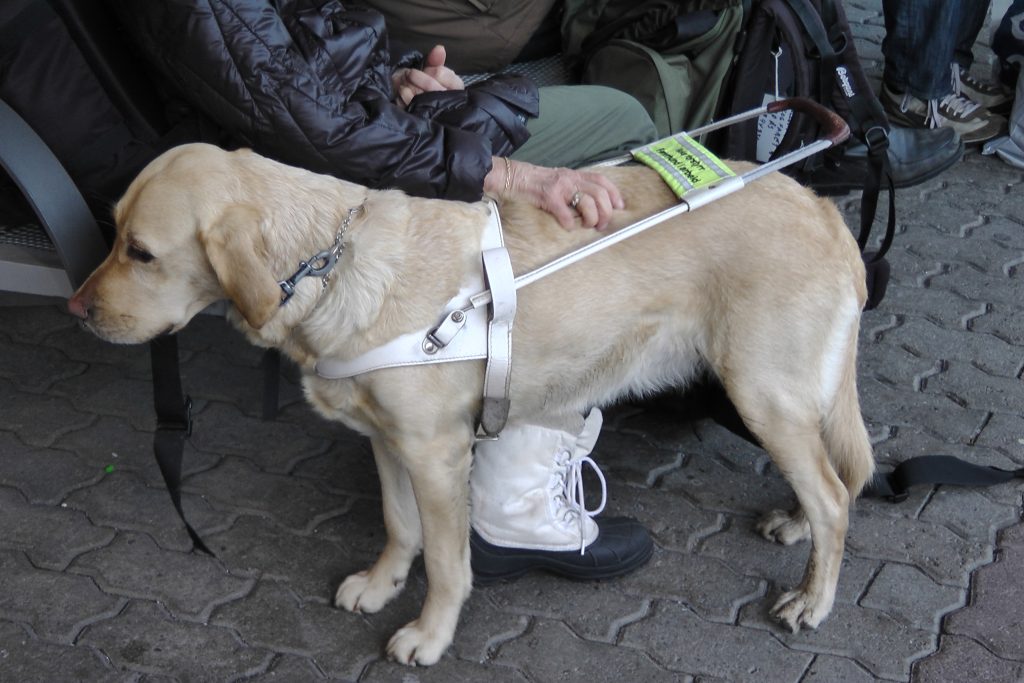Training Techniques for Therapy Dogs: Preparing Your Pet to Help Others

Preparing Your Pet to Help Others
The bond between humans and dogs can be powerful, often serving as a source of comfort and healing. Therapy dogs play a crucial role in various settings, including hospitals, schools, and nursing homes. They bring joy and support to those in need, but they require proper training to fulfill this important role effectively.
Understanding the right training techniques is essential for your dog’s development and prepares them for the unique challenges and rewards of being a therapy dog. By investing time and effort into training your pet, you can help create a positive experience for both your dog and the individuals they will assist.
Socialization: The First Step
Socialization is a foundational aspect of training for therapy dogs. This involves exposing your dog to a variety of environments, people, and situations. For instance, taking your dog to a busy park, a quiet library, or a bustling café can help them learn to remain calm amidst noise and activity. It’s essential that your dog becomes comfortable with different types of people, including children, the elderly, and individuals with disabilities. The more diverse their experiences, the better prepared they will be to comfort those in various situations.
Mastering Basic Commands
Equipping your dog with basic commands is equally important. Commands such as sit, stay, and come are not just about obedience but establish a framework for communication between you and your pet. For example, during therapy sessions, well-timed commands can help maintain a safe and organized environment, ensuring your dog doesn’t stray or become distracted. Teaching your dog to remain calm and composed is paramount. Practicing in low-distraction settings before gradually introducing more chaotic environments will ensure they are ready for the diverse scenarios they may encounter.
Desensitization: Building Resilience
Desensitization is another critical aspect of therapy dog training. This process involves gradually introducing your dog to various stimuli they may face during therapy visits, such as wheelchairs, medical equipment, or even different smells associated with hospitals. Start with mild exposure, such as simulating the noises or movements of a hospital setting at home, then progressively increase the intensity as your dog becomes more comfortable. This preparation enables them to remain calm and focused, providing the much-needed emotional support to individuals undergoing tough times.

With the right approach and consistent training, you can prepare your pet to make a significant impact. The training process is about more than just commands; it’s about building a confident and empathetic companion. Many organizations, such as Pet Partners or the Alliance of Therapy Dogs, provide resources and guidelines to assist owners in navigating this journey. By following effective strategies and seeking additional information, you can transform your canine companion into a certified therapy dog, capable of offering companionship and solace.
This journey of training will not only strengthen your bond but also enrich the lives of countless individuals. Therapy dogs are not just pets; they are vital components of emotional healing, providing comfort during difficult times. With dedication and love, you can empower your pet to fulfill this rewarding role, turning your companionship into a healing partnership that resonates for years to come.
DON’T MISS: Click here to learn about pet nutrition
Essential Techniques for Training Therapy Dogs
Training a therapy dog is an intricate process that goes beyond simply teaching commands. It involves equipping your canine companion with a variety of skills that will enable them to provide comfort and support in diverse environments. In this section, we will explore key training techniques that are essential in preparing your pet to help others effectively.
Creating a Structured Training Routine
One of the most important aspects of training your therapy dog is establishing a structured training routine. Consistency is key when it comes to dog training; thus, a regular schedule will help your dog understand expectations. Training sessions should be short, engaging, and incorporate a mix of commands and socialization activities. For example:
- Daily Sessions: Aim for at least 15-30 minutes of focused training each day.
- Positive Reinforcement: Use treats, praise, and play to reward your dog for good behavior.
- Variety in Activities: Rotate between basic commands, socialization outings, and desensitization exercises to maintain your dog’s interest and prevent boredom.
The goal is to make training an enjoyable experience that fosters a deep connection between you and your pet. This structured approach will not only enhance your dog’s skills but also build their confidence, enabling them to navigate challenging situations during therapy visits.
Understanding Canine Body Language
Just as it is vital for therapy dogs to understand human commands, it is equally essential for trainers to interpret canine body language. Recognizing cues such as wagging tails, tucked ears, or stiff bodies can provide insights into how your dog is feeling in various situations. Being aware of your dog’s emotional state can help you make informed decisions about their training and socialization:
- Relaxation Signals: Signs of comfort include laying down, soft eyes, and a wagging tail.
- Stress Indicators: Be alert for signs such as lip licking, avoiding eye contact, or growling, and address these issues promptly.
- Excitement Cues: A dog that jumps or barks may be overly stimulated, indicating a need for more calming exercises.
By mastering the art of reading your dog’s body language, you can create an environment that is both supportive and conducive to their growth. This understanding is vital in helping them to adjust to the various emotional atmospheres they will encounter during their therapy sessions.
Harnessing the Power of Positive Social Interactions
The interactions your therapy dog has with people can greatly influence their ability to perform in different settings. Positive social interactions are critical for developing an empathetic and approachable dog. Encourage your pet to engage with a wide range of people, including those with different backgrounds and needs. Here’s how you can facilitate this:
- Invite Friends and Family: Arrange gatherings where your dog can meet various individuals and experience different personalities.
- Participate in Community Events: Attend local festivals, dog parks, or charity walks to introduce your dog to new environments and crowds.
- Volunteer for Socialization Opportunities: Join programs that allow dogs to interact with children or individuals with disabilities in a controlled manner.
The more social experiences your dog has, the more adept they will become at providing comfort in diverse, often high-pressure environments. By implementing these strategies, you are taking significant steps toward preparing your pet for the rewarding path of becoming a therapy dog.
| Advantage | Description |
|---|---|
| Enhanced Emotional Support | Therapy dogs are trained to provide comfort and emotional support to individuals in stressful situations, fostering a calming environment. |
| Improved Social Interaction | Engaging with a therapy dog can significantly enhance social interactions, breaking down barriers between individuals in healthcare settings. |
| Physical Benefits | Therapy dogs encourage physical activity and mobility among the patients, leading to better overall physical health outcomes. |
| Cognitive Stimulation | Interaction with dogs can stimulate cognitive processes, enhancing mental health and improving patient focus and engagement. |
The training techniques for therapy dogs are designed not only to prepare these incredible animals but also to maximize their potential impact on the lives they touch. By integrating methods that encourage responsiveness and empathy, owners can nurture dogs to become exceptional helpers in environments ranging from hospitals to schools and community centers. Each interaction fosters a bond that is not just beneficial; it’s transformative. Training your dog to serve as a therapy companion involves patience, consistency, and understanding of the unique needs of the people they assist. Exploring the various training techniques can lead you to discover new ways to improve both your dog’s skills and the quality of service they provide.
LEARN MORE: Click here to discover how to keep your pets healthy!
Advanced Techniques for Enhancing Therapy Dog Preparation
As your therapy dog progresses through their training, it is important to introduce advanced techniques that will further refine their skills. Being well-prepared for diverse therapeutic environments entails not just obedience training, but also specialized tasks that may be required in various settings. In this section, we delve into advanced training methods that will elevate your therapy dog’s ability to assist others.
Desensitization to Common Triggers
Therapy dogs may encounter a wide array of stimuli that could potentially provoke anxiety or discomfort. This is where desensitization training becomes invaluable. The goal is to gradually introduce your dog to common triggers, such as loud noises, sudden movements, or various medical equipment while maintaining a calm demeanor. Here are some effective techniques:
- Controlled Exposure: Safely expose your dog to various situations, such as visiting hospitals, schools, or therapy centers in a controlled manner.
- Gradual Introduction: Start with low-intensity versions of triggers and gradually increase intensity as your dog learns to cope.
- Real-World Practice: Simulate therapy dog scenarios at home to help your dog become accustomed to the types of interactions they will face on actual visits.
By employing these desensitization practices, your therapy dog will develop the resilience needed to thrive in potentially overwhelming situations, ensuring they can provide the support that is often crucial for individuals in need.
Teaching Specific Therapeutic Tasks
Beyond general obedience and social skills, many therapy dogs are trained to perform specific tasks that assist clients during therapy sessions. Understanding the unique needs of the populations your dog will serve is pivotal. Consider these task-oriented training approaches:
- Retrieving Items: Train your dog to fetch essential items, such as tissues, phones, or water bottles, which can be especially beneficial during therapy sessions.
- Providing Physical Support: Teach your dog to brace themselves for individuals who may need help standing or walking, fostering a sense of security.
- Interrupting Negative Behaviors: Train your dog to gently interrupt behaviors such as persistent self-harm or anxiety-driven actions, alerting caregivers or offering comfort.
These specific training elements not only enhance your dog’s therapeutic capabilities but also provide invaluable support to those they assist, making therapeutic experiences more manageable and calming.
Consistency Through Certification and Evaluation
Once your therapy dog has acquired fundamental and advanced skills, it’s crucial to secure certification from a recognized therapy dog organization. Certification not only serves as a formal acknowledgment of your dog’s training but also emphasizes the importance of consistent evaluation:
- Standardized Testing: Many organizations require passing tests that assess temperament, obedience, and the ability to handle distractions, ensuring that your dog is suited for therapy work.
- Ongoing Assessments: Continuous evaluation can manifest through regular refresher training sessions and assessments to ensure that your dog remains well-prepared.
- Feedback from Professionals: Collaboration with certified trainers, therapists, and volunteers helps identify areas for improvement and adjust the training program as needed.
By pursuing certification and maintaining high standards of evaluation, you reinforce the significance of quality training, ensuring your therapy dog is capable of offering meaningful support to those they are meant to help.
LEARN MORE: Click here to discover how to help your pets
Conclusion: The Path to Effective Therapy Dog Training
Training therapy dogs is a rewarding journey that blends patience, commitment, and a deep understanding of both canine behavior and human needs. Throughout this article, we have explored the vital training techniques for therapy dogs that ensure your pet is ready to provide comfort and support in various therapeutic environments. From mastering basic obedience to employing advanced skills like desensitization and task-oriented training, each step is essential in cultivating a capable and reliable therapy companion.
The benefits of having a well-trained therapy dog extend far beyond companionship; they create a bridge for emotional healing in individuals who may be struggling with physical or mental challenges. By focusing on desensitization training, you prepare your dog to remain calm amid potential stressors, while the addition of specific therapeutic tasks empowers them to assist clients in meaningful ways. Certification and ongoing evaluation complement this training, promoting not only accountability but also fostering confidence in the dog’s abilities.
As we conclude, it’s essential to remember that with continued education, socialization, and collaboration with professionals, you can enhance your therapy dog’s skills and adaptability. Engaging in this educational pursuit not only enriches your pet’s life but profoundly impacts the lives of those they help. If you’re considering delving deeper into therapy dog training, resources abound to support this fulfilling mission, allowing your furry friend to touch lives and bring hope where it’s needed most.


